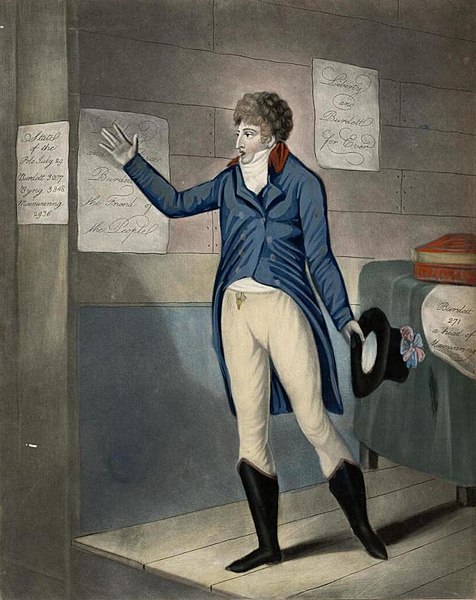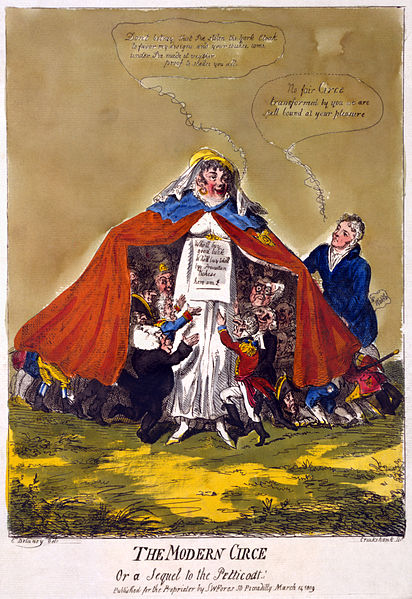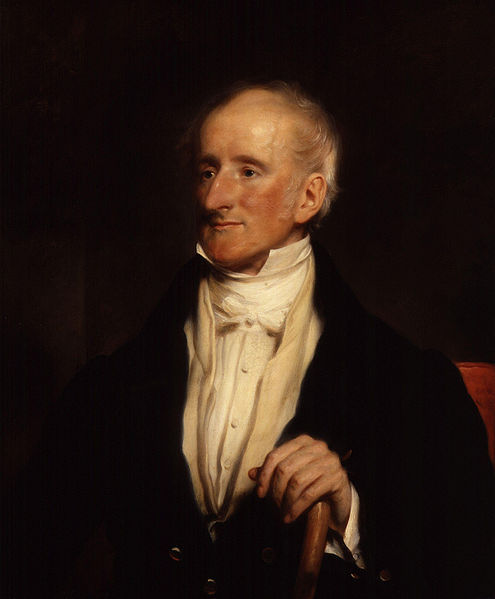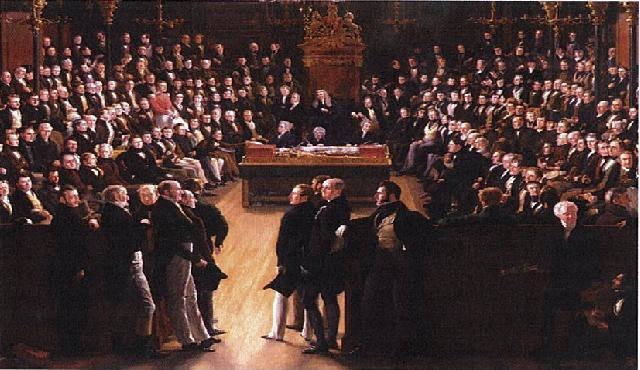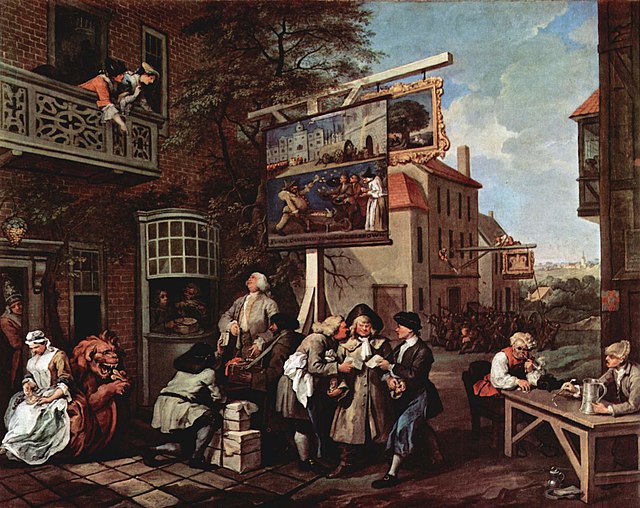Sir Francis Burdett, 5th Baronet was a British politician and Member of Parliament who gained notoriety as a proponent of universal male suffrage, equal electoral districts, vote by ballot, and annual parliaments. His commitment to reform resulted in legal proceedings and brief confinement to the Tower of London. In his later years he appeared reconciled to the very limited provisions of the 1832 Reform Act. He was the godfather of Francisco Burdett O'Connor, one of the famed Libertadores of the Spanish American wars of independence.
Portrait by Thomas Phillips
Burdett addressing the freeholders of the county of Middlesex from the Hustings, 1802
"The modern Circe or a sequel to the petticoat", caricature of Mary Anne Clarke, the mistress of the Duke of York, Prince Frederick, by Isaac Cruikshank, published 15 March 1809. Frederick would resign as Commander-in-Chief 10 days later.
Portrait by Sir Martin Archer Shee
The Representation of the People Act 1832 was an Act of Parliament of the United Kingdom that introduced major changes to the electoral system of England and Wales. It reapportioned constituencies to address the unequal distribution of seats and expanded franchise by broadening and standardising the property qualifications to vote. Only qualifying men were able to vote; the Act introduced the first explicit statutory bar to women voting by defining a voter as a male person.
Start of parchment roll of the Reform Act 1832, with royal assent of King William IV marked above Le Roy le veult.
A painting by Sir George Hayter that commemorates the passing of the Act. It depicts the first session of the newly reformed House of Commons on 5 February 1833 held in St Stephen's Chapel. In the foreground, the leading statesmen from the Lords: Charles Grey, 2nd Earl Grey (1764–1845), William Lamb, 2nd Viscount Melbourne (1779–1848), and the Whigs on the left; and Arthur Wellesley, 1st Duke of Wellington (1769–1852), and the Tories on the right. Currently in the
The House of Commons is the lower house of Parliament.
Canvassing for Votes, part of William Hogarth's Humours of an Election series, depicts the political corruption endemic in election campaigns prior to the Great Reform Act.


